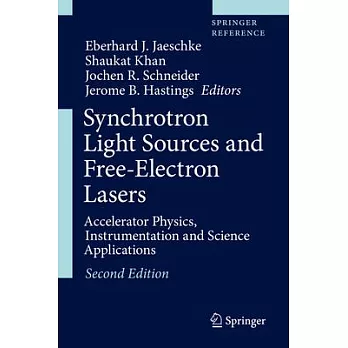Eberhard Jaeschke studied physics at the universities of Erlangen and Princeton. After his PhD in Nuclear Physics, he moved to the Max-Planck-Institut für Kernphysik, Heidelberg, where his interests turned more and more to the physics of accelerators and their development. At Heidelberg University he taught experimental physics, got his habilitation and was promoted to professor (apl). The Heidelberg-TSR, - the first Heavy Ion cooler ring with electron and laser cooling -, which he managed as project leader, was a worldwide recognized success. From Heidelberg Eberhard Jaeschke moved to Berlin, becoming member of the board of directors of the Berliner-Elektronenspeicherring-Gesellschaft für Synchrotronstrahlung BESSY and received a call for a full professorship at the Humboldt Universität. He was project director of the construction of BESSY II, the first German third-generation synchrotron light source. His marvelous team managed to build BESSY II in time and on budget and turned after this success to the design of modern light sources, the Free Electron Lasers (FELs).
Research stays over the years were to Los Alamos, Stony Brook, Tokyo, Chalk River and to the Budker Institute of Nuclear Physics, Novosibirsk.
Eberhard Jaeschke retired from BESSY after eighteen years on the board and is now professor emeritus. In 2010, he was awarded the Officer’s Cross of the Order of Merit of the Federal Republic of Germany.
Shaukat Khan studied physics at Heidelberg University and received his doctor’s degree in 1987 with work in nuclear spectroscopy at the Max Planck Institute for Nuclear Physics. While working as a postdoc on a silicon vertex detector for the ARGUS experiment at DESY/Hamburg, he became more and more interested in accelerator physics. Consequently, he joined the BESSY II project in Berlin in 1993 where his research interests included collective beam instabilities and the generation of ultrashort x-ray pulses.
After receiving his lecturer qualification (habilitation) from the Humboldt University of Berlin, he became W2 professor at Hamburg University in 2006 and full professor at TU Dortmund University in 2008. In addition to holding a chair in accelerator physics, he is director at the university-based synchrotron radiation facility DELTA at which his working group develops laser-seeding techniques to produce ultrashort radiation pulses.
Jochen Schneider studied Physics at the University of Hamburg and did his PhD under the guidance of H. Maier-Leibnitz at the Institute Max von Laue-Paul Langevin in Grenoble, France. After working at the Hahn-Meitner Institute and the Technical University in Berlin, in December 1989 he moved to the Deutsches Elektronen-Synchrotron DESY in Hamburg, Germany. His main interest is in structural phase transitions and electronic properties of solids, as well as synchrotron radiation instrumentation. He developed γ-ray diffractometry and pioneered the application of high energy synchrotron radiation in condensed matter research. In 1993 he became head of the synchrotron radiation laboratory HASYLAB at DESY, from 2000 to 2007 he was Photon Science Research Director. In his tenure he initiated DESY’s 3rd generation synchrotron radiation facility PETRA III, the free-electron lasers FLASH and European XFEL and the Center for Free-Electron Laser Science CFEL. After 2 years at SLAC National Accelerator Laboratory at Stanford in charge of the experimental facilities division of LCLS, the Linac Coherent Light Source, he is now a Fellow of CFEL and scientific advisor to the DESY Directorate.
In 1981 Jochen Schneider received the Viktor-Moritz-Goldschmidt-Award of the German Mineralogical Society, in 2001 the European Crystallography Prize, and in 2008 the Officer’s Cross of the Order of Merit of the Federal Republic of Germany.
Jerome Hastings studied Applied Physics at Cornell University and did his PhD under the guidance of B. W. Batterman. After working at the National Synchrotron Light Source for nearly 25 years, in October 2001 he moved to the SLAC National Accelerator Laboratory in Menlo Park, CA, USA. His main interest is in methods and instrumentation for accelerator based light sources. He developed the applications of ultra-high energy resolution methods applied to synchrotron based Mössbauer Spectroscopy and inelastic X-ray ay scattering. In addition he lead the ultra-short pulse spontaneous radiation facility "Sub-Picosecond Pulse Source" at the SLAC National Accelerator Laboratory from 2001 to 2006. In his tenure at the National Synchrotron Light Source the NSLS R&D effort developed many of the methods and instruments in common use today at 3rd generation synchrotron light sources.



 天天爆殺
天天爆殺  今日66折
今日66折 
























 博客來
博客來 博客來
博客來 博客來
博客來 博客來
博客來 博客來
博客來